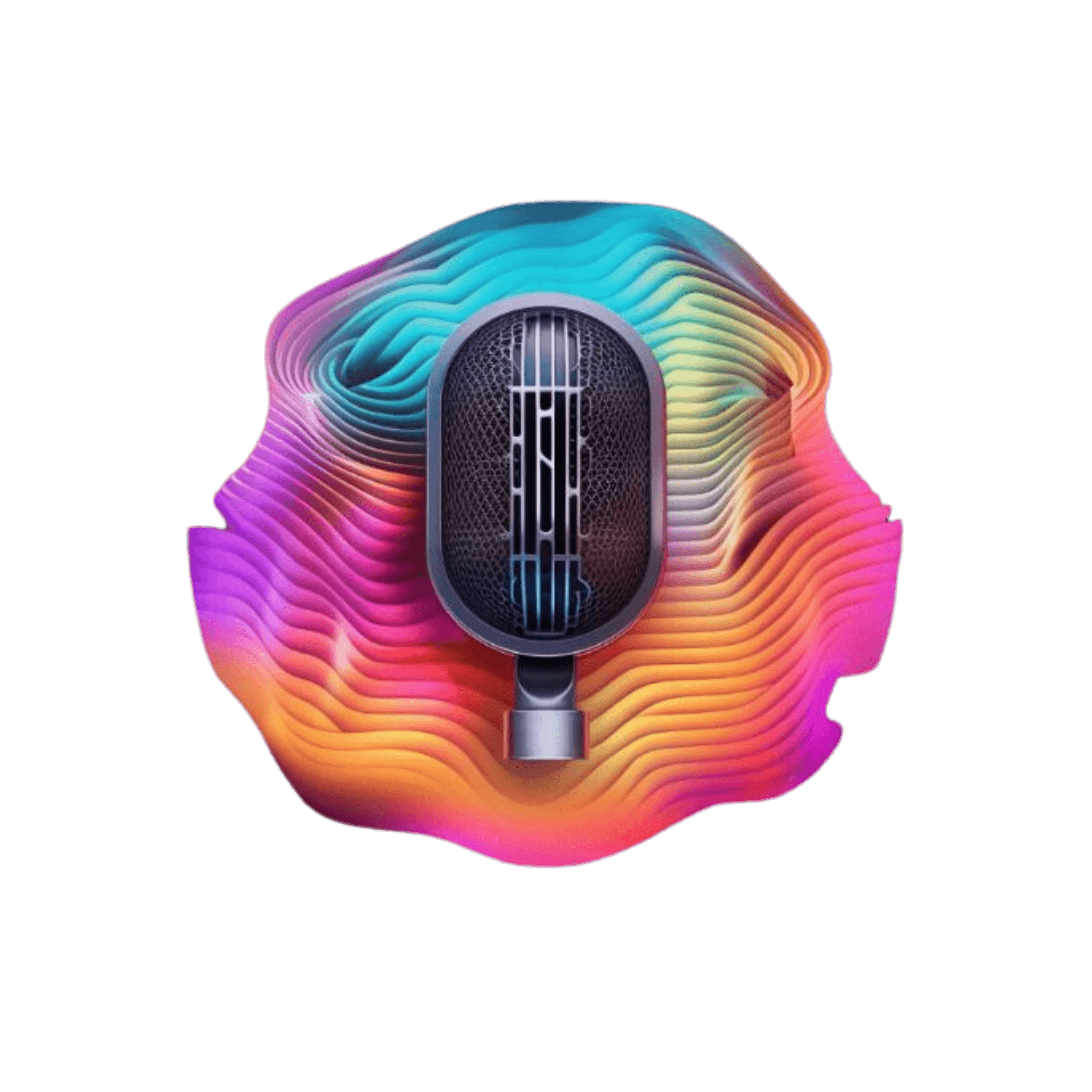
FROM OUR BLOG
FROM OUR BLOG
FROM OUR BLOG
5 Reasons to Stop Using Robotic Text to Speech for Your Content
Mar 27, 2025



Table of Contents
What Is Robotic Text to Speech?
Why Robotic TTS Tools Became Popular
The Limitations of Robotic Text to Speech in 2024
Realistic Alternatives Like Voicestars AI
Where Robotic TTS Still Works (And Where It Doesn’t)

What Is Robotic Text to Speech?
Robotic text to speech (TTS) refers to digital voices that sound mechanical, synthetic, and monotone—often lacking emotion, pacing, and natural flow. These voices are typically found in:
Older GPS systems
Screen readers
Auto-generated customer service bots
Early TTS narration tools
Meme narration on YouTube and TikTok
They work by converting text into basic speech using simple rule-based voice engines or low-data machine learning models. While they're useful in accessibility tools, their mechanical tone doesn’t hold up in AI music production, storytelling, or brand voiceover.
That’s why today’s creators are moving toward platforms like Voicestars—which offer expressive, emotional AI voicesthat sound like real people (or even celebrities).
You can now generate voiceovers and vocals that mimic the speech of:
Why Robotic TTS Tools Became Popular
Let’s be honest: robotic voices were everywhere in early YouTube days. And they still show up in:
TikTok meme narrations
AI jokes with monotone delivery
Voiceovers in low-budget explainer videos
Discord bots and gaming commands
These tools became popular because they were:
✅ Free
✅ Easy to use
✅ Require no recording equipment
✅ Work instantly in browser or app

🔧 Common Free Robotic TTS Tools Include:
These tools usually offer 1–2 generic voices, often with no customization, poor pacing, and zero emotional nuance.
The Limitations of Robotic Text to Speech in 2024
While robotic voices were fine for quick narration, their lack of realism makes them less effective for:
🎧 Music covers or song intros
🎙 YouTube storytelling
📱 TikTok narration that holds attention
🎮 In-game dialogue that feels immersive
🎬 Voiceovers that require real emotion
That’s why more creators are replacing robotic speech with AI-generated voiceovers from tools like Voicestars, which offer:
✅ Human-like voices
✅ Celebrity voice models
✅ Emotional modulation
✅ Natural pauses, pacing, and tone

🎙 Example:
Old robotic narration:
“Today. We. Are. Going. To. Talk. About. The. Top. Ten. Video. Games.”
Voicestars version in SZA's voice:
“Here’s the real list you didn’t know you needed—Top 10 games that hit different in 2024.”
Realistic Alternatives Like Voicestars AI
Instead of using a robotic-sounding voice that ruins the vibe of your content, Voicestars lets you:
Pick from 1,000+ voice models
Add emotion, tone, and personality
Clone your own voice for consistent branding
Use voices from Rihanna, Nicki Minaj, Justin Bieber, and more

🔊 Music Creators Use It To:
Generate AI covers
Create artist-style hooks or intros
Remix verses with Kendrick Lamar or Juice WRLD
Replace robotic hooks with voices that actually sound like music
📹 YouTubers Use It To:
Narrate videos in Ariana Grande's tone
Create multi-voice commentary without hiring actors
Give voice to characters in animations, stories, and game recaps

📱 TikTok & Shorts Creators Use It To:
Replace boring voiceover with celebrity voices
Add drama, sarcasm, or humor to their scripts
Narrate fan edits, fake DMs, or reviews in AI voices that feel real
Where Robotic TTS Still Works (And Where It Doesn’t)
Let’s be fair: robotic text to speech still has its place—especially in:
✅ Accessibility tech
✅ System voice alerts (e.g. GPS, ATM machines)
✅ Memes where the robotic voice is part of the joke
✅ Basic bot narration or Discord commands
But it doesn’t hold up when:
❌ You’re telling a story
❌ You want emotional impact
❌ You’re creating music or remixing vocals
❌ You want your brand to sound premium
For anything involving creative voicework, Voicestars is miles ahead.
Why Creators Are Moving Away from Robotic TTS
Flat, emotionless TTS is officially out. Whether it’s music, narration, or storytelling, creators are ditching robotic voices and upgrading to realistic AI speech synthesis with tools like Voicestars.
🎵 Music Creators Use AI Voices for Covers and Hooks
No more robotic-sounding autotune. Artists are now cloning voices from:
Rihanna for smooth vocal riffs
Drake for hip-hop verses
Billie Eilish for melancholic melodies

🎥 YouTubers and Shorts Creators Add Realism to Their Scripts
Instead of narrating with a robotic AI, creators now voice their content using:
Ariana Grande for fashion/beauty intros
Kendrick Lamar for documentary-style commentary
Sabrina Carpenter for lifestyle and Q&A content

Step-by-Step Guide: Create your favourite Ai voice with Voicestars AI
Video Guide
Written Guide
1. Visit the Voicestars Homepage
Go to Voicestars and click “Try now.”

2. Select Your AI Voice or Track
Choose from Bollywood stars, regional accents, or fictional voices.

3. Upload a Song or Add Text for Remixing
Insert an audio clip or type song lyrics for a quick remix.

4. Download and Share Your VoiceTips for Making the Most of AI Voice CoversFAQs About Robotic TTS vs AI Voice Generation
❓ Why is robotic text to speech still used?
Robotic TTS still appears in accessibility tools and meme narration. It’s fast and simple—but lacks realism and control for content creators.
❓ Is Voicestars better for music content?
Yes. Voicestars supports both speaking and singing voices with proper pitch, rhythm, and emotion—ideal for AI music covers and vocal layering.
❓ Can I monetize content made with AI voices?
You can! Voicestars offers commercial licensing for creators.
👉 Check pricing here
❓ Can I replace my own voice with an AI clone?
Yes—Voicestars lets you upload samples and clone your voice for efficient narration and content creation.
❓ What’s the main difference between robotic TTS and Voicestars?
Robotic TTS = monotone, synthetic
Voicestars = expressive, emotional, artist-grade performance

If You Want to Try Voicestars Free AI Voice Generator, You Can Try Out 1000+ Celebrity Voices, Like:
…and hundreds more at Voicestars
Related Readings
Table of Contents
What Is Robotic Text to Speech?
Why Robotic TTS Tools Became Popular
The Limitations of Robotic Text to Speech in 2024
Realistic Alternatives Like Voicestars AI
Where Robotic TTS Still Works (And Where It Doesn’t)

What Is Robotic Text to Speech?
Robotic text to speech (TTS) refers to digital voices that sound mechanical, synthetic, and monotone—often lacking emotion, pacing, and natural flow. These voices are typically found in:
Older GPS systems
Screen readers
Auto-generated customer service bots
Early TTS narration tools
Meme narration on YouTube and TikTok
They work by converting text into basic speech using simple rule-based voice engines or low-data machine learning models. While they're useful in accessibility tools, their mechanical tone doesn’t hold up in AI music production, storytelling, or brand voiceover.
That’s why today’s creators are moving toward platforms like Voicestars—which offer expressive, emotional AI voicesthat sound like real people (or even celebrities).
You can now generate voiceovers and vocals that mimic the speech of:
Why Robotic TTS Tools Became Popular
Let’s be honest: robotic voices were everywhere in early YouTube days. And they still show up in:
TikTok meme narrations
AI jokes with monotone delivery
Voiceovers in low-budget explainer videos
Discord bots and gaming commands
These tools became popular because they were:
✅ Free
✅ Easy to use
✅ Require no recording equipment
✅ Work instantly in browser or app

🔧 Common Free Robotic TTS Tools Include:
These tools usually offer 1–2 generic voices, often with no customization, poor pacing, and zero emotional nuance.
The Limitations of Robotic Text to Speech in 2024
While robotic voices were fine for quick narration, their lack of realism makes them less effective for:
🎧 Music covers or song intros
🎙 YouTube storytelling
📱 TikTok narration that holds attention
🎮 In-game dialogue that feels immersive
🎬 Voiceovers that require real emotion
That’s why more creators are replacing robotic speech with AI-generated voiceovers from tools like Voicestars, which offer:
✅ Human-like voices
✅ Celebrity voice models
✅ Emotional modulation
✅ Natural pauses, pacing, and tone

🎙 Example:
Old robotic narration:
“Today. We. Are. Going. To. Talk. About. The. Top. Ten. Video. Games.”
Voicestars version in SZA's voice:
“Here’s the real list you didn’t know you needed—Top 10 games that hit different in 2024.”
Realistic Alternatives Like Voicestars AI
Instead of using a robotic-sounding voice that ruins the vibe of your content, Voicestars lets you:
Pick from 1,000+ voice models
Add emotion, tone, and personality
Clone your own voice for consistent branding
Use voices from Rihanna, Nicki Minaj, Justin Bieber, and more

🔊 Music Creators Use It To:
Generate AI covers
Create artist-style hooks or intros
Remix verses with Kendrick Lamar or Juice WRLD
Replace robotic hooks with voices that actually sound like music
📹 YouTubers Use It To:
Narrate videos in Ariana Grande's tone
Create multi-voice commentary without hiring actors
Give voice to characters in animations, stories, and game recaps

📱 TikTok & Shorts Creators Use It To:
Replace boring voiceover with celebrity voices
Add drama, sarcasm, or humor to their scripts
Narrate fan edits, fake DMs, or reviews in AI voices that feel real
Where Robotic TTS Still Works (And Where It Doesn’t)
Let’s be fair: robotic text to speech still has its place—especially in:
✅ Accessibility tech
✅ System voice alerts (e.g. GPS, ATM machines)
✅ Memes where the robotic voice is part of the joke
✅ Basic bot narration or Discord commands
But it doesn’t hold up when:
❌ You’re telling a story
❌ You want emotional impact
❌ You’re creating music or remixing vocals
❌ You want your brand to sound premium
For anything involving creative voicework, Voicestars is miles ahead.
Why Creators Are Moving Away from Robotic TTS
Flat, emotionless TTS is officially out. Whether it’s music, narration, or storytelling, creators are ditching robotic voices and upgrading to realistic AI speech synthesis with tools like Voicestars.
🎵 Music Creators Use AI Voices for Covers and Hooks
No more robotic-sounding autotune. Artists are now cloning voices from:
Rihanna for smooth vocal riffs
Drake for hip-hop verses
Billie Eilish for melancholic melodies

🎥 YouTubers and Shorts Creators Add Realism to Their Scripts
Instead of narrating with a robotic AI, creators now voice their content using:
Ariana Grande for fashion/beauty intros
Kendrick Lamar for documentary-style commentary
Sabrina Carpenter for lifestyle and Q&A content

Step-by-Step Guide: Create your favourite Ai voice with Voicestars AI
Video Guide
Written Guide
1. Visit the Voicestars Homepage
Go to Voicestars and click “Try now.”

2. Select Your AI Voice or Track
Choose from Bollywood stars, regional accents, or fictional voices.

3. Upload a Song or Add Text for Remixing
Insert an audio clip or type song lyrics for a quick remix.

4. Download and Share Your VoiceTips for Making the Most of AI Voice CoversFAQs About Robotic TTS vs AI Voice Generation
❓ Why is robotic text to speech still used?
Robotic TTS still appears in accessibility tools and meme narration. It’s fast and simple—but lacks realism and control for content creators.
❓ Is Voicestars better for music content?
Yes. Voicestars supports both speaking and singing voices with proper pitch, rhythm, and emotion—ideal for AI music covers and vocal layering.
❓ Can I monetize content made with AI voices?
You can! Voicestars offers commercial licensing for creators.
👉 Check pricing here
❓ Can I replace my own voice with an AI clone?
Yes—Voicestars lets you upload samples and clone your voice for efficient narration and content creation.
❓ What’s the main difference between robotic TTS and Voicestars?
Robotic TTS = monotone, synthetic
Voicestars = expressive, emotional, artist-grade performance

If You Want to Try Voicestars Free AI Voice Generator, You Can Try Out 1000+ Celebrity Voices, Like:
…and hundreds more at Voicestars
Related Readings
More Update




